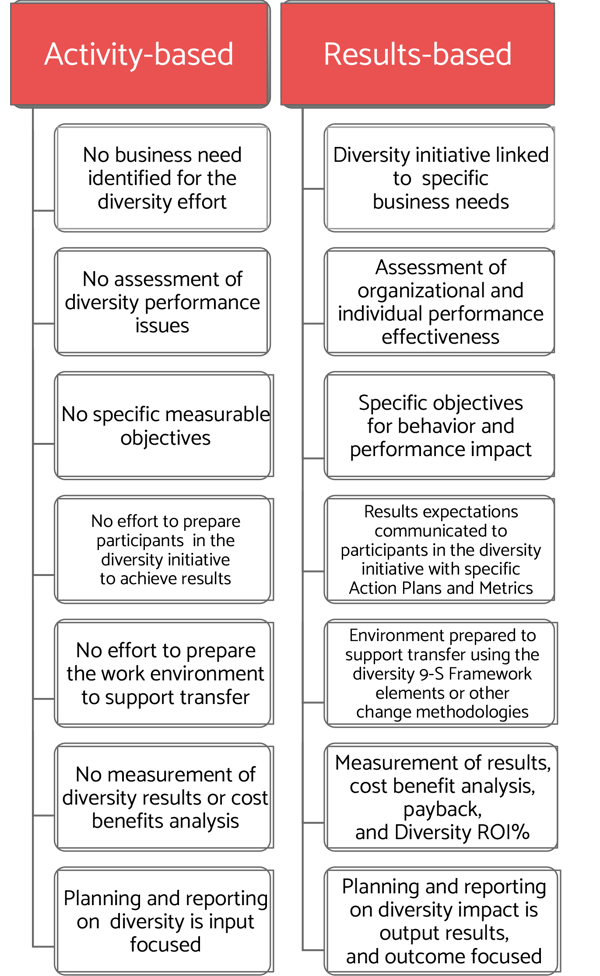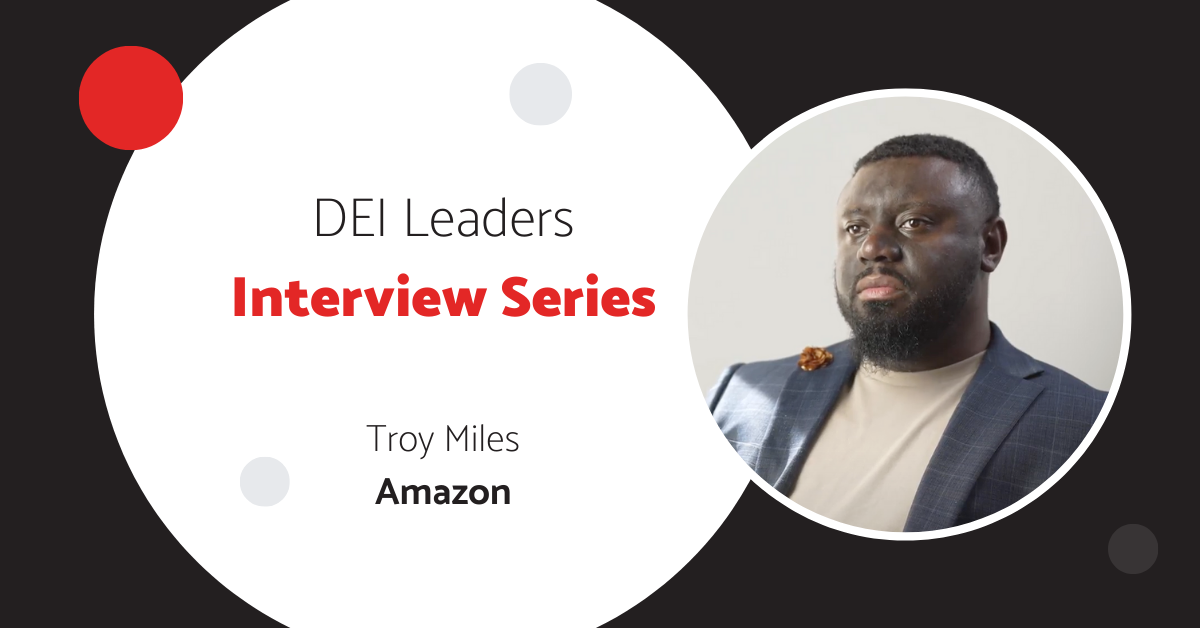Trends in Diversity & Inclusion: an interview with Dr. Ed Hubbard

We caught up with Dr. Ed Hubbard to discuss the latest thinking on Diversity, Equity and Inclusion efforts, especially learning initiatives underway within companies. Ed is a respected thought leader who consults with numerous D&I professionals on strategy and trends.
Q: The current social-political climate has pushed Diversity and Inclusion to the forefront of corporate strategy. What new trends are you seeing within companies as they put the spotlight on D&I?
A: Headlines for the last several weeks have been heartbreaking and provide another opportunity for us to respond. The deaths of George Floyd, Breonna Taylor, and Ahmaud Arbery exposed the presence of systemic bias and racism. This has triggered a renewed examination of the effectiveness of corporate D&I efforts and the organization’s preparedness to respond to these issues. Some trends suggest that organizations and leaders are beginning to educate themselves more effectively to increase their understanding of the origins of racism, as well as how to dismantle the elements of systemic bias and structural racism in their organizations. This is a complex process that will require much more than a “quick fix” through education. Like any other strategic business initiative, transformative cultural change towards Diversity and Inclusion will require a comprehensive strategy, operational and procedural change processes, quantitative and qualitative metrics and analytics, incentives, and other accountability elements to produce real behavior and culture change.
Companies are beginning to ask themselves: “What practices does my company have in place to support Black and People of Color team members?” “How am I supporting civic engagement to hold public leaders accountable and tackle structural racism in our systems of government?” “How am I measuring the real impact that these aspirational and structural changes are having on our employees to create an inclusive, “world-class” diverse environment?” These methods must be based upon proven diversity management and leadership competencies that drive an inclusive culture and are rooted in a leader’s Diversity management capability. This level of competency and capability must be taught, tested and measured for its ROI impact, and non-financial and financial results.
Q: How are companies approaching learning initiatives that focus on D&I? Have you seen instances of companies wanting to move from awareness to true behavior change?
A: D&I training initiatives are currently being approached from a traditional training and instructional point of view. Unfortunately, I have found many of them are not based upon a clear “Front-end Analysis (FEA)” or Needs Analysis that is aligned with an organization’s business objectives. In addition, they do not take full advantage of Diversity and Inclusion ROI sciences that help drive true behavior change and bottom-line organizational impact. There are some organizations that are making strides in this direction; however, the majority of organizations in my experience and from our research studies have indicated that the C-Suite and Diversity executives must do a more comprehensive job to move from awareness to behavior change and hold the D&I organization accountable. Examples of this paradigm shift are illustrated in my Impact Migration Model:
Strategic Diversity & Inclusion Impact Migration Model:
Moving from Activity to Results

Q: Have you seen any specific topics take center stage within the learning programs around D&I?
A: The focus on D&I in corporate America right now has raised a variety of topics that are being considered as part of the strategy – there are dozens of topics out there right now. The topics I’ve seen which take center stage are:
- Retention and Engagement
- Unconscious Bias
- Racism and Anti-racism (recently due to the current political and social climate focused on racial and social injustice)
- Measuring ROI Impact of Initiatives
- Employee and Business Resource Group
- Intersectionality
- White Fragility
- Diversity and STEM
- Gender Identity and Expression
Q: Have you seen specific technologies being used to help deliver learning around D&I? Here at ETU, we believe in the power of simulation learning, which places the learning into realistic scenarios, increasing the likelihood of true behavior change. Are you seeing companies using simulations, VR, or other technologies with their D&I learning?
A: I have seen D&I professionals use specific learning technologies such as
- E-Learning modules
- Micro-Learning tools
- Case-based simulations
I have not seen widespread use of technologies such as VR. However, I do believe that immersive technologies such as “VR”, Augmented Reality and others provide an advantage, because they place the learner into realistic scenarios where they can make decisions based on another person’s emotions and reaction. Augmented reality is bridging gaps by improving learning engagement and retention in real time while delivering real business ROI benefits. They also give learners a safe place to practice and hone their skills. Diversity and Inclusion can benefit immensely from the use of these types of technologies.
Diversity and Inclusion (D&I) professionals can use a variety of technologies in their D&I training such as manual and online simulations, experiential learning scenarios, and the like in Diversity and Inclusion “skill-practices” (as part of an overall Inclusive Leadership workshop) with learning logic, branching, assessment, and feedback analytics to provide impacts and consequences based upon learner choices made.
“Work Flow” learning can be a tremendous asset for Diversity and Inclusion, especially if it is automated with feedback, ROI-based accountability metrics, and elements of gamification. I have found that “micro-learning” modules reinforced by real management support, business alignment, and process integration into the fabric of the way the organization does business can be critical to the results achieved. Learners often need learning on their schedule, not the Training and Development Department’s schedule. In this racially and politically-charged societal environment, diverse employees and managers need technology tools which help them proactively prepare for interpersonal interactions that are integrated with content that descales conflict situations and/or provides content and resources which build cultural competency to handle crucial conversations around differences.
State-of-the-art and next-level technologies exist that make all these options available TODAY!
Q: What advice do you have for other leaders of D&I initiatives?
A: I would strongly suggest C-Suite and Diversity executives must do a more comprehensive job using the latest Diversity and Inclusion sciences to move from awareness to behavior change. They also must hold the D&I organization accountable to use them. I have received many “eleventh-hour” calls from D&I executives and professionals who indicate their organizations are being reduced and/or eliminated and wonder what they can do to turn things around. In most cases, it is too late by then.
For the last almost 40 years that I have been in the D&I space, I have urged D&I executives, professionals and practitioners to utilize Diversity and Inclusion sciences to deliver evidence-based impact to their organizations. I created an entire Diversity and Inclusion ROI science-based field of study to equip D&I professionals with the competencies, skills, tools, templates, and Certifications to prove their organization’s impact and value on the bottom-line (in financial and non-financial terms). This would help avoid actions of low budget investments, reductions, and job eliminations in the D&I organization. However these scientific approaches have not been fully embraced. We offer the following areas of professional certification that are only available through Hubbard & Hubbard, Inc.:
- Certified Diversity Return on Investment Professional (CDROIP)
- Certified Diversity Trainer (CDT)
- Certified Diversity Advisor (CDA)
- Certified Diversity Performance Consultant/Technologist (CDPC)
- Certified Diversity Business Partner (CDBP)
- Certified Diversity Strategist (CDS)
- Certified Diversity Intervention Specialist (CDIS)
These areas of specialization were designed to provide D&I professionals with the skill-set, competencies and systems to drive measurable, evidence-based change in their organizations which demonstrate value-added to the organization’s bottom-line goals, objectives and results. The C-suite and other leaders must support D&I beyond mere conversation and one-off showcases of D&I efforts. There must be a comprehensive, systems-based D&I process that is measured, adjusted and tracked over the long-term that yields evidence-based results and impact.

